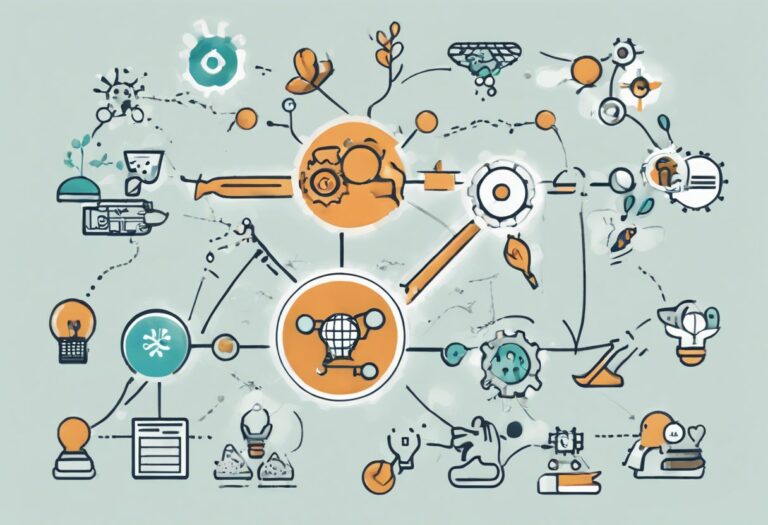7 Time-Proven SaaS Marketing Strategies and Tactics

Nowadays, Software as a Service (SaaS) continues to grow significantly each year and this business model has become a common thing for both buyers and suppliers.
Moreover, according to a Gartner forecast, the SaaS market is expected to grow to $116 billion this year due to the scalability of subscription-based software.
This is good news for SaaS company owners, but on the other hand, it means that competition is growing as well. Thus, it’s very important to explore current marketing trends and implement proven SaaS marketing strategies to stand out and have an edge over competitors.
What is SaaS Marketing?
If you start a SaaS business, you have to differentiate SaaS marketing from other industries, as it has its own rules and tactics.
The first important thing to know is that the SaaS business model is oriented on promoting and selling subscription-based products. Thus, you shouldn’t expect a positive ROI instantly. Moreover, your main goal is not getting your customers back each time like in e-commerce, you have to keep them using your product (service) permanently as long as you can.
Therefore, SaaS marketing is a type of marketing that focuses on gaining and retaining customers on a long-term basis. That is why it is essential to build a strong marketing strategy and maintain regular communication with clients in order to constantly increase the number of subscriptions and, what is really crucial, prevent churn.
The Pillars of Your SaaS Marketing Strategy
In order to start planning your own business strategy, let’s explore and select a combination of time-proven B2B and SaaS marketing strategies and tactics which will help your company beat the competition and grow in today’s crowded market.
Content Marketing & SEO
Content marketing is a primary SaaS marketing strategy that is used to grow and generate leads.
In order to attract and engage the right audience, you have to post high-quality content on your website answering the main questions from potential customers on the topic, as well as demonstrating how your tool will solve their problems or simplify their business processes. This marketing strategy is proven effective by the fact that many SaaS companies have started to create their own blogs. According to current statistics, 36% of SaaS companies use blogs to share their educational content. Moreover, blogging didn’t just appear as a key way to educate the audience, but also to target keywords, attract visitors via search engines, and generate new qualified leads.
This shows us that content marketing goes hand in hand with Search Engine Optimization (SEO), the goal of which is to put your website at the top of search rankings and, thus, make the website visible to the relevant target audience.
Besides using on-page SEO techniques, when you post content within your website, you can also use off-page SEO to build high-quality backlinks from trusted sources, which will help your website move up the SERP, as well as drive referral traffic to your website. According to this study, the average SaaS blog has 5,800 backlinks from 378 referring domains.
Outbound Marketing
The next marketing strategy is outbound marketing, which is quite the opposite of the previous one, as in this case you are looking for customers who may be interested in your product. This type of marketing strategy is especially effective for B2B and SaaS companies.
The main goal here is to reach and nurture potential customers through different digital advertising channels. Although such outbound activities are focused on distributing messages to a rather broad audience, in order to achieve the best results possible, it will be necessary to target them precisely as well.
Let’s review the most productive ways to promote a product, boost website traffic, and increase conversion rates through digital advertising for the SaaS business model.
Google Ads
Advertising with Google Ads seems like a perfect option for the SaaS marketing strategy, as you are targeting your audience by selecting the exact same words your ideal customers enter while searching for the software solution you provide.
Although starting a PPC campaign looks quite easy and it proves to be a quite strong marketing tool, it requires a large marketing budget to select software-related keywords. Unfortunately, this is not usually attainable for SaaS startups.
Anyway, if you’ve decided to try Google Ads to generate traffic to your website, you have to create a relevant message that will appeal to your potential customers and pull them into your nurturing process.
Another important issue lies in having the right metrics. It is best to determine your ad spend based on the profit your customer will bring throughout their engagement (Customer Lifetime Value), rather than on the cost of acquiring that customer.
Retargeting
Attracting visitors to the website is just the first stage of lead generation. The next and no less important step of the process is conversion, which can be achieved with the help of retargeting.
This type of ad campaign aims to increase conversion by reconnecting with your website visitors and converting them into customers. It involves showing relevant ads on other resources to visitors who leave your website without taking any actions such as subscribing, signing up for a free trial, or requesting a demo.
Many companies run retargeting ads within their SaaS marketing strategy. As an alternative to traditional campaigns, Rontar’s approach to SaaS retargeting doesn’t involve just running the same static ad all the time (as that promotes ad fatigue, which in return drives CTR and ROMI down), instead it turns your retargeting campaign into a full-scale nurturing tool.
Using Storytelling, you can communicate with potential leads via a sequence of different ads promoting your product. This will help you move your visitors through the sales funnel by engaging them with different messages on their customer journey. Here’s one way you could create your ad sequence:
- Day 1-4. Introduce your product.
- Day 5-7. Demonstrate your top features.
- Day 8-11. Show your main advantages.
- Day 12-15. Feature your best case study.
- Day 17-19. Share your reviews.
- Day 20-24. Promote your product.
- Day 25-28. Show your latest blog post on the topic.
- Day 29-30. Promote a special offer.
With Storytelling retargeting created especially for SaaS businesses, you will be able to increase ROMI, build brand awareness, grow thought leadership and, thus, move your prospects down the funnel.
Native Advertising
Native advertising is another type of outbound SaaS marketing strategy. The main point is that native ads adapt to the look, feel, and function of the platform on which they appear. Thus, they do not even look like ads; they look like a part of the website.
Currently, native ads are considered to be much more efficient than traditional display ads. They get more attention from consumers, which drives CTRs higher. Therefore, the results of such campaigns are significantly better. Moreover, it is an innovative way to avoid the ever-so-popular ad blockers and eventually reach your target audience.
Needless to say, when you create a native ad, correct and precise targeting is very important for connecting with the relevant market. Rontar’s native advertising campaigns have extensive targeting options, including audience and shoppers only targeting. Therefore, you can easily narrow down your audience to get high-intent traffic to your website.
Email Marketing
Although email marketing is one of the oldest ways to engage customers, it is still a powerful tool in SaaS marketing.
With the help of email marketing, it is possible to cover several areas of the customer engagement process:
- Attract new leads via cold emailing.
- Engage opt-in subscribers with updates on new features.
- Nurture your leads with predefined automated sequences of messages.
- Communicate with your customers via direct emails in order to prevent churn.
Remember that only personalized emails with the right persona-driven messages to the relevant group of people will positively affect your ROI.
One more tip within the framework of both content and email marketing is exchanging the most valuable content for the visitor’s email address. This will push the potential customer through the sales funnel and will give you an opportunity to nurture your lead via email.
Referral Marketing
Referral marketing shouldn’t take last place in your SaaS marketing strategy, as it is usually cost-effective but at the same time an influential tool for attracting new customers.
Start launching a referral program by offering your customers good incentives for referrals. They may include discounts, additional free use of the product, access to extra features, etc. Additionally, ask your long-term customers to write reviews, as they have already explored the product and can describe its value for the business.
Although it is necessary to make an effort to receive those first referrals, later this referral marketing will help grow your business on its own.
Co-Marketing
Sometimes SaaS companies that offer non-competing solutions but aim to reach the same target audience launch so-called co-marketing campaigns.
A shared campaign is a cost-effective way to increase brand awareness, enlarge your audience, and generate leads. Hubspot even has its own co-marketing program to run such projects with other companies and co-create educational and useful content for their audiences.
Remember that such collaborations with well-established companies will positively affect your brand.
Final advice
Now, after this brief overview of the most popular and time-proven SaaS marketing strategies, you can select those which suit your current state of business best. Our advice is to test a few tactics to see which ones generate the best ROI for your company.






